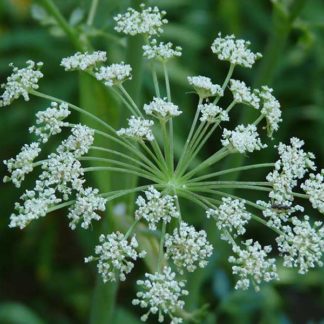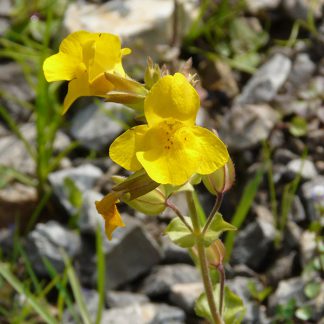stream banks
on the banks, but not necessarily in the water
Showing 1–12 of 45 results
-

Acer glabrum / Rocky Mountain maple
- understory shrub, small tree, multiple stems
- opposite leaves; red twigs
- maple-like leaves
- teeny flowers; double-helicopter fruits
-

Allium brevistylum / short-styled onion
- clusters of 7-15 urn-shaped flowers atop a single flowering stalk
- pink with 6 tepals
- leaves much shorter than the inflorescence
- leaves grow from base and are "grass-like"
- swampy meadows and along streams
- smells like onions/garlic
-

Apocynum cannabinum / common dogbane
- herbaceous perennial with red stems and long/narrow leaves
- leaves have prominent veins
- leaves and stems exude white latex if broken
- white, bell-shaped flowers held erect in stalked clusters
- seedpods long, thin and brownish; in pairs
- often near streams or in moist places
-

Argentina anserina / silverweed
- silvery, compound leaves on low, creeping stems
- yellow, 5+ petaled flowers; lots of stamens
- fens, other wetlands, but also roadsides
-

Artemisia cana / silver sagebrush
- Low perennial, silvery shrub
- Highly aromatic, like sagebrush
- Entire leaves - no lobes
- Nondescript, inconspicuous flowers in small clusters with leaf-like bracts
- Grows in more moist habitat than other Artemisia spp.
-

Bistorta bistortoides / American bistort
- rocky areas, tundra/alpine
- inflorescence a 2" dense cylinder with many teeny white flowers
- notable protruding stamens
- leaves basal, long/thin and leathery
-

Castilleja miniata / scarlet paintbrush
- bright red, or orange or sometimes yellow bracts that are mistaken for flowers
- looks like a red feather duster, but only a few inches long
- generally low, and along streams or roadsides on hills where there is moisture
- leaves ovoid with prominent veins, no petioles
-

Cicuta douglasii / water hemlock
- HIGHLY TOXIC
- primarily on continuously wet soils, e.g. ditches, stream banks, pond margins, marshes.
- white compound umbel inflorescence typical of the Apiaceae/Umbelliferae
- multiply compound leaves with prominent veins ending in notches between lobes
-

Cirsium scariosum / elk thistle
- usually tall, quite prickly thistle with deeply lobed, spiny leaves
- large, lavender (pink to purple) flowers hidden by the long leaves
- covered with white hairs giving it a silvery look overall
- in moist areas, in full sun
-

Corallorhiza wisteriana / spring coralroot
- small, easily missed in the forest duff
- no leaves, no green parts
- flowers have white lips, possible spots, no eared tabs
- scape (flowering stalk) purple, or yellow, or brown
- may stay dormant for years at a time
-

Cornus sericea / red osier dogwood
- shrub with opposite branching and red bark, brightest in fall/winter
- common along streams especially
- small white flowers, 4 petals, in clusters
- white or blue-ish white berries in fall
- opposite leaves with parallel veins
-

Erythranthe guttata / seep monkeyflower
- yellow flowers with red spots in clumps of 5 or more
- flowers large for the plant, but otherwise "normal" size
- two "lips" - lower lip larger than upper, each with 2 petals
- found in wetlands of all kinds
Showing 1–12 of 45 results